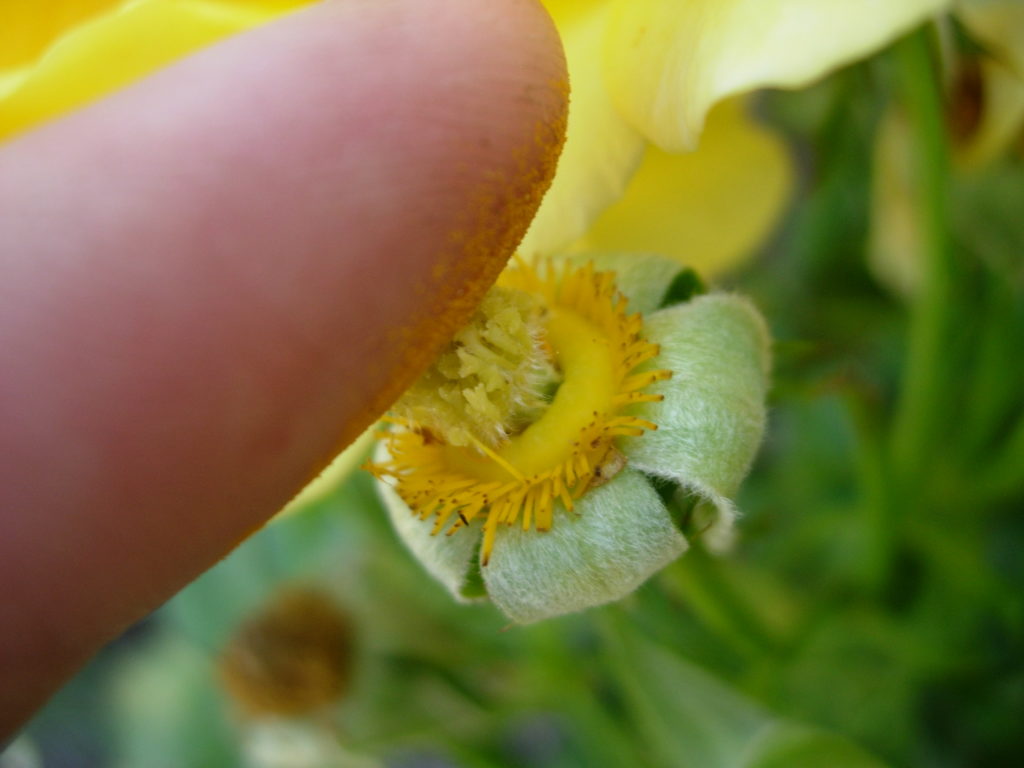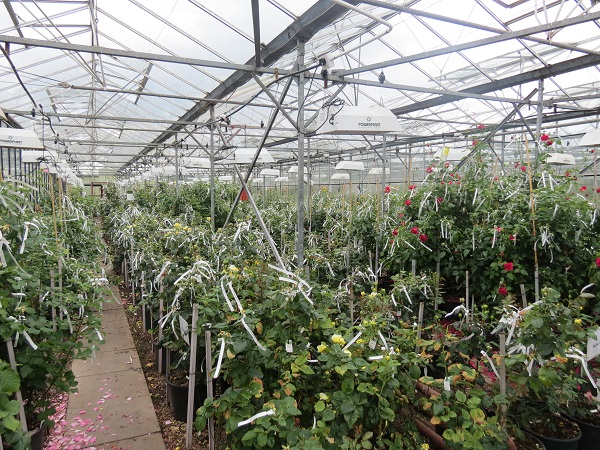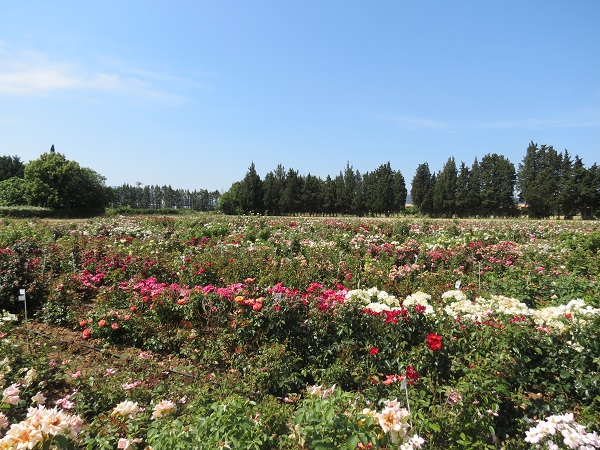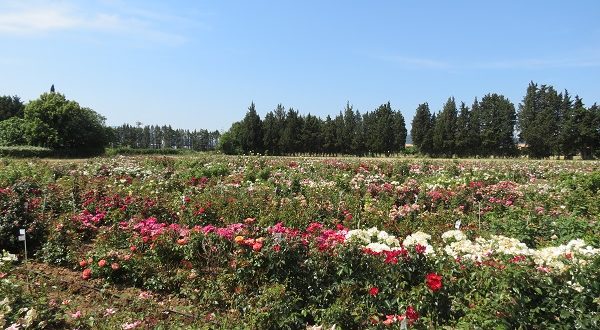One of the most fascinating aspects of the world of roses is how new varieties are created that people get to enjoy in the gardens. It is not something that just happens overnight, rather it is a time-consuming process with no guarantee of success at the other end.
Breeding roses can be done by anyone and those involved in creating varieties range from small backyard hobby operations through to large companies overseas who sell roses around the world.
Deciding what roses to use as parents is one of the key decisions the rose breeder has to make and can make or break reputations. Some knowledge of genetics is useful but what is more important is that someone has an eye for roses and can breed and select roses accordingly for characteristics such as disease tolerance, fragrant, colour and form.
Many parent roses are from the breeders own program and not named or commercialised as such, but possess characteristics that they wish to bred with. These are often identified publicly as ‘seedling’. A good parent rose will also set seed well and produce lots of pollen.
The actual process of breeding roses is very simple. Pollen from one variety is transferred onto the stigma of another by pollen brush or finger that have had the stamens and petals removed to prevent self-pollination. It is labelled, usually with a code developed by the breeder to identify the parents. Large scale rose breeding operations will make anywhere up to 100,000 crosses or more a year; backyard breeders may make only a dozen or so.

If successful, the rose will develop hips containing seeds which will expand over the next few months and change colour to orange or red. Once this occurs, it’s time to harvest the seeds and expose them to a period of cold temperature for several months, usually by refrigeration to stimulate germination.

Once planted, germination of the seeds can be very erratic with some taking months to germinate. Usually 30 – 40% will grow but often less.
After three or four sets of leaves are produced, a flower bud forms and this gives the breeder the first look at a flower – a very exciting time as it gives the breeder the first look at what the particular cross is giving in terms of flower colour and form.
However, it’s also a time when the breeder has to start culling seedlings and selecting those they want to carry on for further evaluation. Common reasons why seedlings are discarded include disease problems, lack of vigour, poor or uninteresting colour, poor form or it is just too common.
The seedlings also give a good indication of fragrance and this also influences whether or not a seedling is retained. Fragrance is also very hard to breed for in roses. If you cross two very fragrant roses, there is no guarantee that any of the resulting seedlings will be fragrant and it is often linked with characteristics like poor disease tolerance.
After this first year, those seedlings that have been selected, maybe 5% of all those that germinated are moved outside and propagated to give more plants for evaluation. Propagation also tests how well the variety can be produced in a commercial environment as anything that is difficult to propagate is unlikely to succeed commercially.
Outside, plants are exposed to more environmental factors and over the next 4 – 5 years they are consistently evaluated across a range of characteristics. Is it healthy? Does it have an attractive flower? Does it repeat bloom well? Is the plant an attractive shape?
These questions and more are all asked by the breeder and those that do not measure up, are eliminated. A breeder may start with several thousand seedlings at the beginning and will probably end up with less than 10 they consider suitable for commercial release.

Once the decision is made to commercially release a rose, the process begins to build up enough plants for sale by propagation (usually budding) and distributing it to other rose nurseries around the world for further evaluation and potential release.
New rose varieties are also entered into the various rose trials around the world and New Zealand is lucky enough to have two trial grounds where new roses are put through their paces. Awards are made to those that pass with flying colours often gives them a good start on the market.
Getting the right name for a rose is very important – a good name can sell an average rose well, likewise, a bad name will make it hard to sell a very good rose. There is almost no limit as to what to call a rose, provided it is not already taken or permission is sought if it is to be named after a person.
Sometimes a name will change between countries where the variety is sold, but what remains the same is the breeders code – this contains three letters that identifies the breeder e.g. Mac for McGredy, Aus for Austin and other letters.
Varieties can be protected from unauthorised propagation by applying for and being granted rights on that variety. In New Zealand, Plant Variety Rights (PVR) are applied for and once criteria have been met, granted on new varieties for up to 23 years provided a yearly fee is paid. It is different in other parts of the world
So as you can see, a lot of work goes into producing a new rose for your garden with a considerable investment in time (around 10 years) and money. Yet, there is no guarantee of success with any new rose as gardening is part of the fashion business – what is ‘in’ one day may suddenly be ‘out’ the next.
- Water your roses when dry.
- Start to prepare areas for plantings in winter by digging over and adding compost.
- Order rose plants for winter delivery especially any new and popular varieties as they can sell out quickly. Also, any varieties you want as a standard as these can be popular as well.
- If you are into budding onto rootstock, February is a good month to do it.
By Hayden Foulds
Hayden also serves as Deputy Chairman of the World Federation of Rose Societies Rose Trials Committee amongst other rose endeavours.










Join the Discussion
Type out your comment here:
You must be logged in to post a comment.